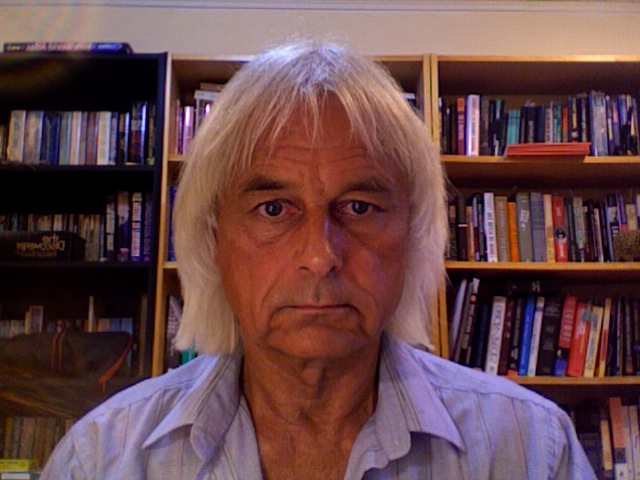If all that rice and kerosene cannot be sold for money, then all that economic value is "worthless" to the capitalist who owns the stuff, because he cannot eat that much rice or burn that much kerosene boiling water to cook his rice. Economic assets have productive value, and the economic goods that are produced have saleable value, to capitalists. If the goods cannot be sold, because nobody who wants to use the goods has money to buy the goods, the capitalist who owns those goods will store them as unsold inventory, and stop producing more goods, waiting until "market conditions" improve.
The capitalist is certainly not going to "give" the goods to people who want to use them. Giving away free food and fuel would totally depress the market price of the capitalist's stockpile of rice and kerosene, and no self-respecting capitalist will act against his own or fellow capitalists' self-interest. When capitalists have stuff, they want to increase the sale price of stuff so they can get more money for the stuff. When capitalists have money, they want to see a decrease in the price of stuff, so they can buy more stuff while spending less of their money.
Capitalism -- to state the obvious -- is all about getting richer in money. Owning the productive economic infrastructure is all about producing goods for sale, all purchases payable in money. But neither capitalist industrialists nor peasant farmers produce any money. Producers can "use" money. But the money comes from outside "the economy" that produces all the economic value.
The peasants were producing and trading economic goods among each other long before the microfinance banker and his money entered the picture. Money is some other kind of thing -- produced or created in some other kind of process -- than "the economy" that produces all the "goods" that have "economic value".
Mechanics of the Commercial Banks' Money Monopoly
Money is not produced by the economy. Bankers do not possess and lend out a pre-existing supply of money that the universe provided to humanity. The trillions of US dollars that exist today, came into existence somewhere between the Big Bang and now.
The world may not have been created by some Divine person. But the world's money was created by people called bankers. And all the world's money is "owed" to the bankers who created the money and "loaned" it to humanity.
The peasant economy and the microfinance banker is a microcosm. The global economy and banking system work by exactly the same arithmetic at a vastly larger scale. The world's commercial banking system -- to state the perhaps not so obvious -- has gained an exclusive monopoly on the issuance of the world's spendable/investible, earnable, savable, "money".
The commercial bank monopoly of money-issuance is the root cause of The Money Problem. All of the numerical quantity of the money supply is loaned into existence by commercial banks as repayable debt at interest. Banks issue credit/debt money in the form of bank deposit accounts coupled with bank loan accounts. You "have" money in your deposit account. You "owe" money in your loan account.
All of the "money" is created in this way: as linked pairs of money and debt.
Commercial bank-issued bank deposits can be converted into central bank-issued cash money. But when you "withdraw cash" at the ATM or teller window, your bank debits your deposit balance in the amount of your cash withdrawal. Your supply of bank deposit money is reduced by the same amount your supply of cash money is increased. Cash does not "add" to the numerical quantity of the money supply. Cash merely converts bank deposits (which exist as numbers in bank computers) into pocket money.
The single exception to the banks' monopoly of money issuance is government-issued coins, which comprise an inconsequential (about one ten thousandth) fraction of the total numerical money supply. The United States Mint produces coins that it sells to banks and to the public at face value. If the coins cost less to produce than their face value, the government earns a "profit" on its coin-minting business. The profit earned by producing cash money is called seigniorage.
In the US$ system, the Treasury-owned Bureau of Engraving and Printing prints Federal Reserve Banknotes and sells the "folding cash" to the Fed for the cost of printing: about 17 cents for a new $100 bill with its embedded security features. The Fed then sells cash to the commercial banks at face value: $100 for a $100 bill.
How do banks "buy money"?
"Banking" is the business of issuing money to purchase interest-bearing debts. The economy's and the government's debts are interest-earning "assets" to the money-issuing banks. In the world money system that uses US dollars as the international payments currency, US Treasury debt is the fundamental "risk-free asset" that banks buy and sell among each other.
A number (currently 22) of large US and international commercial banks have been granted "primary dealer" status to purchase new issues of US Treasury debt. The winning bidder "pays for" its asset purchase by adding a deposit to the US Treasury's Tax and Loan account at that bank. These are the government's main money receiving accounts: receiving tax payments, and loan proceeds from bond auctions. Periodically the government transfers money from its TT&L accounts to its Treasury General Accounts at the regional Federal Reserve Banks. These Fed bank accounts are the government's main money spending accounts.
Next Page 1 | 2 | 3 | 4 | 5 | 6 | 7 | 8 | 9 | 10 | 11 | 12
(Note: You can view every article as one long page if you sign up as an Advocate Member, or higher).





